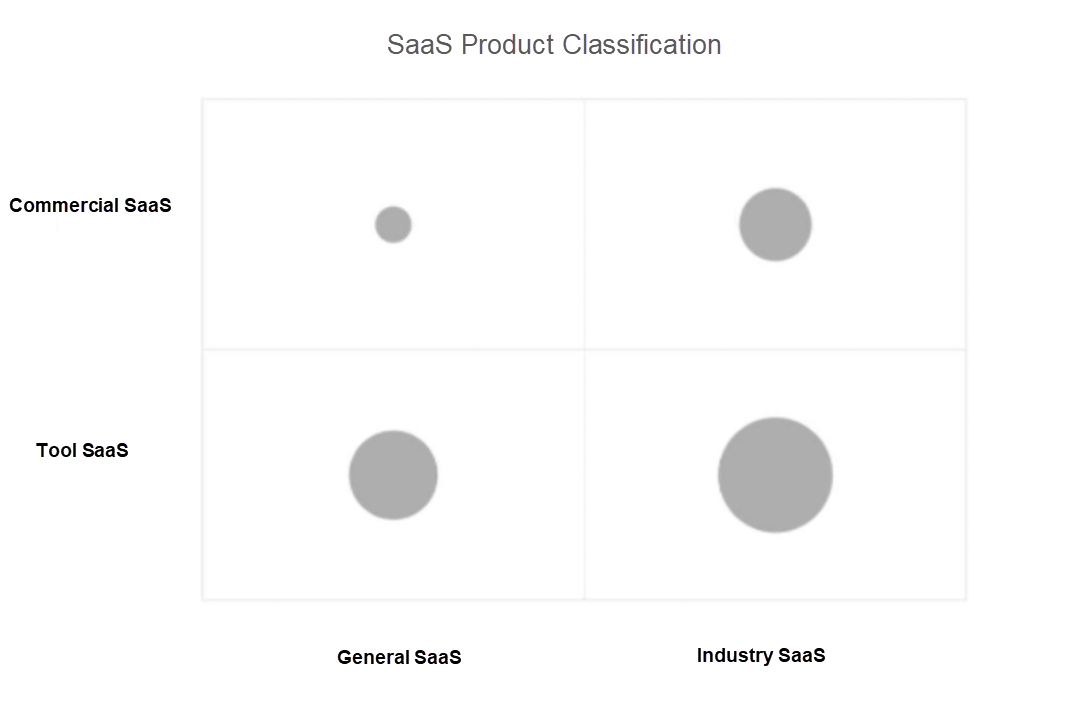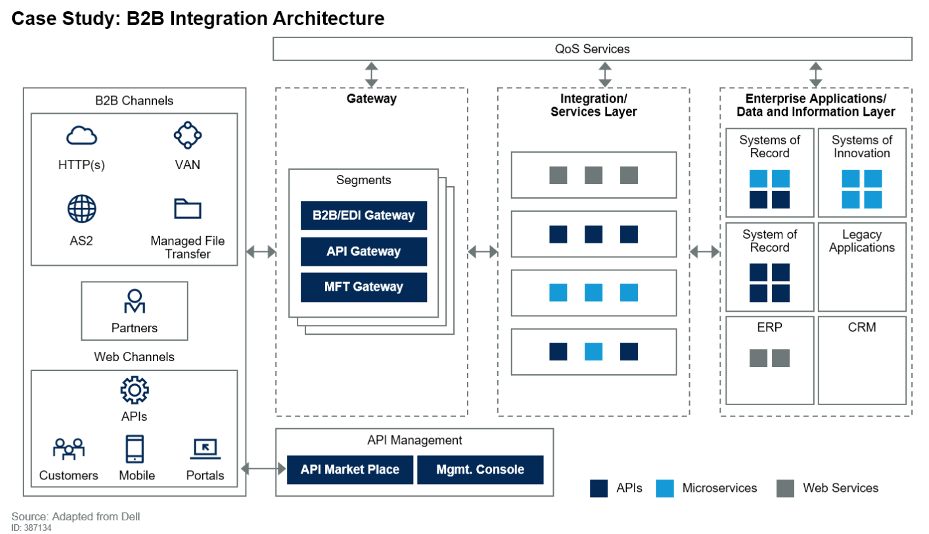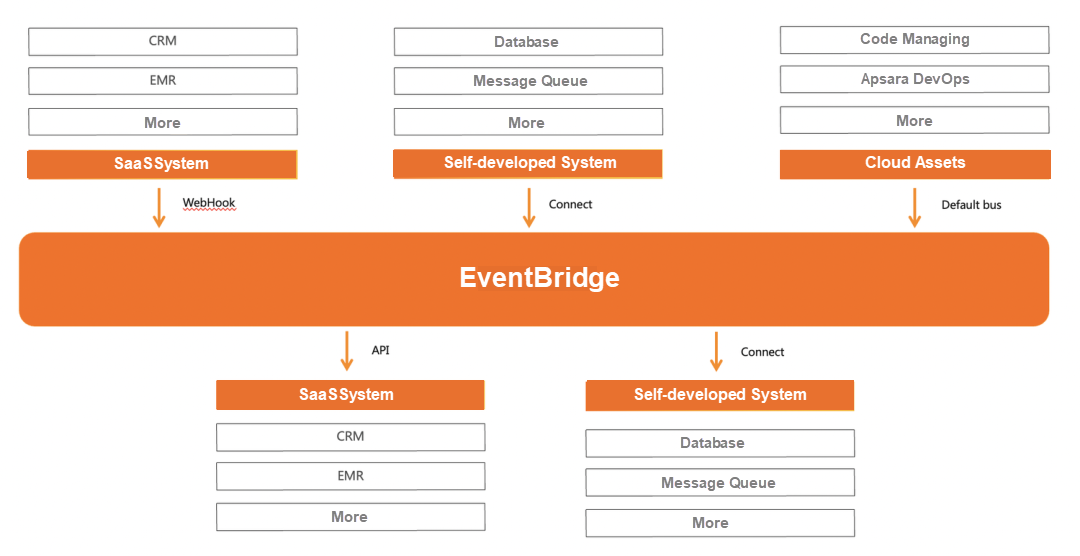By Kenmeng
All walks of life pursue cost reduction and efficiency enhancement. As a faster way to reach and serve business scenarios, SaaS applications are well-known and adopted by many enterprises. With the maturity of the domestic SaaS business environment, engineers and managers of various departments in traditional enterprises can make quick decisions about the purchase of efficiency-improving SaaS products and then put them into production. However, with the increasing number of SaaS in the industry, how to solve the problems of isolated data islands in various SaaS systems and connect SaaS application data with existing system data have become the bottleneck in the use of SaaS. Therefore, the concept of B2B enterprise integration is widely proposed in the industry.
This article offers insights into the SaaS industry and the exploration and practices of SaaS integration based on real-world business scenarios.
Software-as-a-Service (SaaS) originated from the new software service model created by Salesforce in the United States. Compared with traditional software, SaaS software stores its data on the cloud. Moreover, the services provided by SaaS companies are usually rented on demand (such as paying the usage fee per year for five years and renewing in the second year). If you are unsatisfied, you can stop renewing it. This will push SaaS startups to polish their products and provide customers with greater value.
SaaS classification is intricate, but generally, there are two dimensions. One is based on the usage scenario, and the other is based on business value.

SaaS is normally classified into two basic categories: General SaaS and Industry SaaS.
General SaaS, as its name implies, is universal and cross-industry (such as DingTalk instant messaging or the HR products of a company). Due to their wider usage scenarios, they enjoy more customers.
Industry SaaS is a product used in a certain industry (such as catering SaaS and e-commerce SaaS).
The second dimension contains tool SaaS and commercial SaaS.
Tool SaaS provides a tool to improve management efficiency for customer enterprises. In addition to providing some tool value, Commercial SaaS can provide value-added rewards for customer enterprises (such as increasing revenue and obtaining capital).

B2B is Business-to-Business integration, which refers to the automation of workflow and communication between two or more organizations. It can realize the connection between applications and organizational relationships by automating key workflow, effectively promoting the data connection and cooperation between application providers and customers.
It can be concluded that as the SaaS industry penetrates, the demands for enterprise integration will increase. The demands for data, user, and interface synchronization will increase, including the connection between self-built services and SaaS services and the connection between SaaS services.
With the enrichment of industry SaaS, applications and data integration and interconnectivity among applications have become critical in enterprise production practices. It can be applied in API integration, data integration, process integration, and other scenarios.
The workflows of SaaS applications are connected in series through API. At this stage, most SaaS integration and connection are implemented through standard API protocols. The source uses the WebHook mechanism to push to the specified HTTP endpoint, while the target uses a method similar to API calls to actively call and execute actions.
The implementation structure is listed below:

Almost all general solutions in the industry are synchronous solutions, which decouple and map calls through API and intermediate gateways. The main problem with this solution is that call tracing is difficult. In addition, if the upstream and downstream interface restrictions are inconsistent, a large number of downstream calls will fail.
The data integration scenario mainly involves the connection of enterprise self-built systems and SaaS systems. When the number of industry SaaS used by enterprises increases, the problem of data consistency will become urgent.
Most enterprises usually face the scenario of importing or synchronizing data from the cloud to SaaS applications. However, the data integration solution for SaaS applications in the industry is not as standard and general as Debezium in CDC scenarios.
SaaS integration is the necessary infrastructure for enterprises that use SaaS applications extensively. However, it usually consumes a lot of manpower. As SaaS is flourishing in various industries, it is difficult to use one set of architectures to meet all integration scenarios. This means enterprises will face difficulties integrating SaaS systems with their systems when using different SaaS.
Multiple heterogeneous data is another typical feature in the integration field. Heterogeneous data usually includes structured data, non-structured data, and semi-structured data. For example, enterprise self-built RDS is a typical structured data. However, it is usually a semi-structured data input parameter (such as JSON) to be integrated with other SaaS systems. This part can be done through customized codes, but this idea is not for being a message hub.
How to efficiently and uniformly process heterogeneous data is an urgent problem to be solved in current SaaS integration, but it is also the biggest conflict point.
When many integration requirements emerge at the same time, how to properly distribute the integrated data becomes another difficulty in the integration field. The data or data types required for each segmentation scenario or each integration process are different. If routing/distribution fails to be completed, unified enterprise integration will not be realized.
With synchronous processes adopted, the integration status tracking becomes impossible unless the process is connected to Tracing. However, this part incurs high transformation costs, and the complexity of multi-source Tracing will increase geometrically compared with single-source ones.
The migration of old systems is mainly the Data Integration part. How to connect the new and old systems and construct a unified application network are the important points in the current SaaS construction of enterprises. Enterprises urgently need a way to connect new and old applications, break the time and space boundaries of enterprise application development, collaborate with the original core data assets and innovative applications, and build an enterprise IT architecture that can evolve smoothly.
In response to the pain points of SaaS system integration in the industry, EventBridge launched a comprehensive enterprise SaaS integration solution. EventBridge launched API integration and data integration solutions to realize the connections between applications, the cloud, and applications by converging SaaS integration pain point demands.

It provides a fully managed integration platform that only requires simple configuration in the console to complete application integration within minutes. Customers can connect from under the cloud to the cloud without caring about the underlying resources and implementation details. The integration and connection between SaaS to SaaS can easily complete heterogeneous data access.
It meets the requirements of different customers' enterprise-level integration projects and provides high availability, disaster recovery, security, service level agreement (SLA), and all-around technical support.
It supports various integration scenarios to break through information silos between on and off-cloud enterprise applications, IoT, devices, and partners. It supports multiple routing methods (such as event rules and routing) to enable cross-cloud and cross-region communication and information sharing. At the same time, strong tracing analysis capabilities can help enterprises quickly remove obstacles.
It embraces the CloudEvents community to provide a standardized event integration solution. It provides rich developer tools and many ecosystem partners and developers. A wide range of out-of-the-box connectors and application components can be used to help accelerate enterprise business innovation.
Application synchronization refers to the migration of a specific set of events from one system to another at a specific point. Event synchronization mode allows developers to create integrated services for automatic data migration. Business personnel and developers can automatically deliver data within a specific range to downstream applications by configuring integrated applications. Creating reusable services can save a lot of time for development and operation teams.
For Example:
Event broadcast is the behavior of moving an event from a single source system to multiple target systems on a continuous, near real-time, or real-time basis. Essentially, it is the one-to-many one-way synchronization. Generally, one-way synchronization means a 1:1 relationship. However, the broadcast mode can be a 1:n (n is greater than 1) relationship.
For example, when a sales opportunity is marked as successfully closed in CRM, a sales order should be created in ERP.
Event notification refers to when a certain type of event occurs in a SaaS application. Users can be notified through DingTalk, SMS, and other notification methods. Users can obtain key event information timely.
For example, when a sales opportunity is marked as an important business opportunity in CRM, other colleagues will be notified in time for follow-up.
EventBridge supports cloud databases, cloud message queues, and cloud product events to connect to SaaS systems. It improves the demands of enterprise users that want to build a network of applications, breaks the time and space limits of enterprise application development, and collaborates with the original core assets of enterprises and SaaS systems to build an evolvable enterprise IT architecture.
Best Practices for Containerization of GUI Applications on ACK

210 posts | 13 followers
FollowAlibaba Cloud Native Community - January 5, 2023
Alibaba Cloud Native - December 14, 2021
Alibaba Cloud Native - June 12, 2024
Alibaba Cloud New Products - December 4, 2020
Alibaba Container Service - August 1, 2023
Alibaba Developer - April 19, 2022

210 posts | 13 followers
Follow Enterprise IT Governance Solution
Enterprise IT Governance Solution
Alibaba Cloud‘s Enterprise IT Governance solution helps you govern your cloud IT resources based on a unified framework.
Learn More Cloud Governance Center
Cloud Governance Center
Set up and manage an Alibaba Cloud multi-account environment in one-stop mode
Learn More IT Services Solution
IT Services Solution
Alibaba Cloud helps you create better IT services and add more business value for your customers with our extensive portfolio of cloud computing products and services.
Learn MoreMore Posts by Alibaba Cloud Native